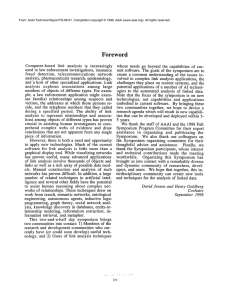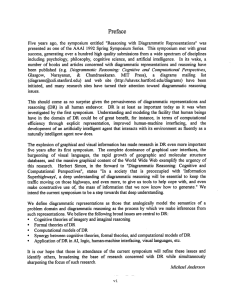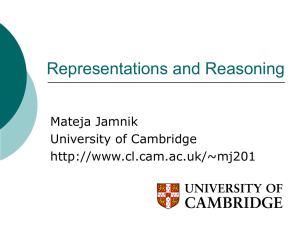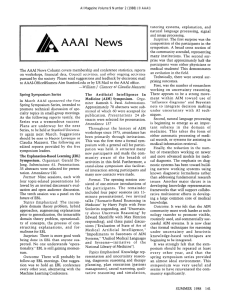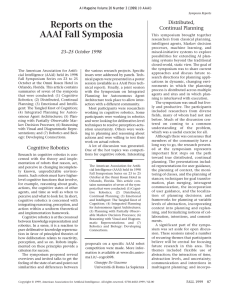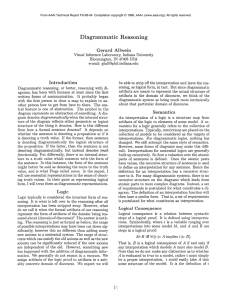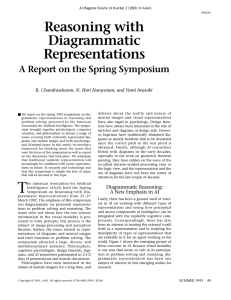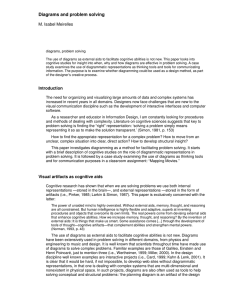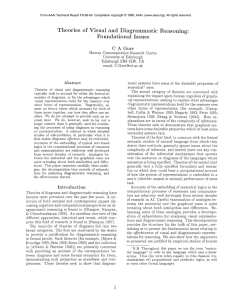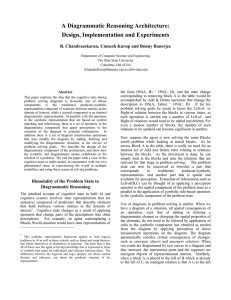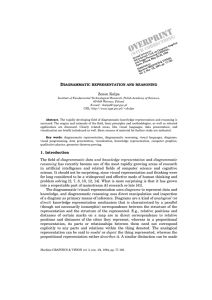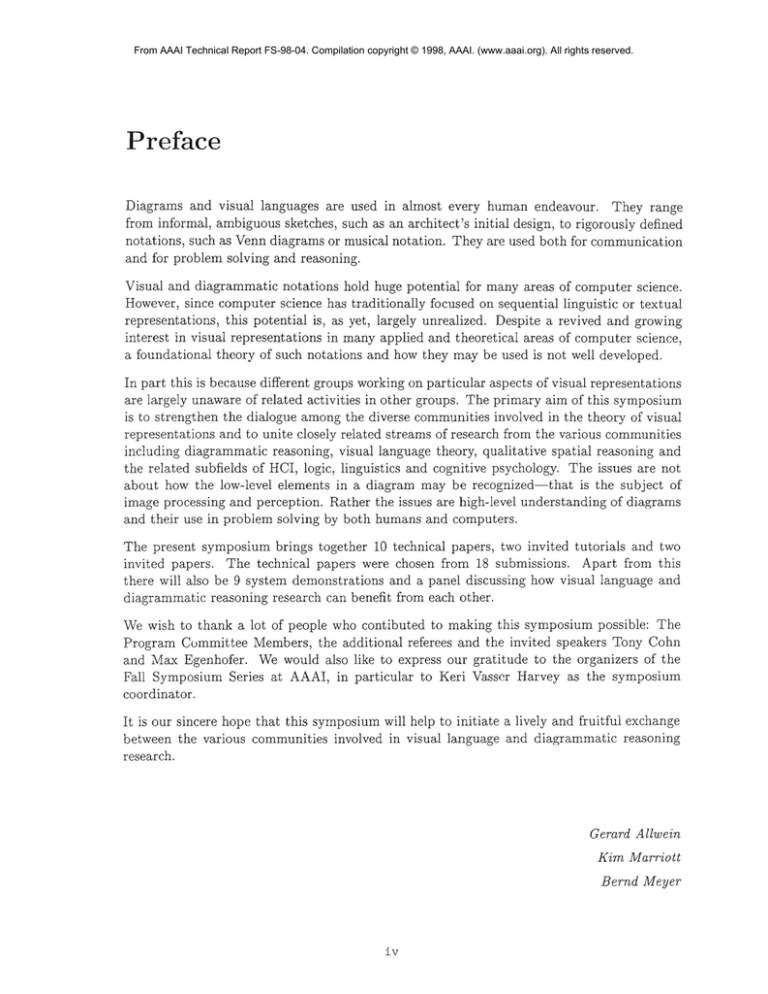
From AAAI Technical Report FS-98-04. Compilation copyright © 1998, AAAI. (www.aaai.org). All rights reserved.
Preface
Diagrams and visual languages are used in almost every human endeavour. They range
from informal, ambiguous sketches, such as an architect's initial design, to rigorously defined
notations, such as Venn diagrams or musical notation. They are used both for communication
and for problem solving and reasoning.
Visual and diagrammatic notations hold huge potential for many areas of computer science.
However, since computer science has traditionally focused on sequential linguistic or textual
representations, this potential is, as yet, largely unrealized. Despite a revived and growing
interest in visual representations in many applied and theoretical areas of computer science,
a foundational theory of such notations and how they may be used is not well developed.
In part this is because different groups working on particular aspects of visual representations
are largely unaware of related activities in other groups. The primary aim of this symposium
is to strengthen the dialogue among the diverse communities involved in the theory of visual
representations and to unite closely related streams of research from the various communities
including diagrammatic reasoning, visual language theory, qualitative spatial reasoning and
the related subfields of HCI, logic, linguistics and cognitive psychology. The issues are not
about how the low-level elements in a diagram may be recognized-that is the subject of
image processing and perception. Rather the issues are high-level understanding of diagrams
and their use in problem solving by both humans and computers.
The present symposium brings together 10 technical papers, two invited tutorials and two
invited papers. The technical papers were chosen from 18 submissions. Apart from this
there will also be 9 system demonstrations and a panel discussing how visual language and
diagrammatic reasoning research can benefit from each other.
We wish to thank a lot of people who contibuted to making this symposium possible: The
Program Committee Members, the additional referees and the invited speakers Tony Cohn
and Max Egenhofer. We would also like to express our gratitude to the organizers of the
Fall Symposium Series at AAAI, in particular to Keri Vasser Harvey as the symposium
coordinator.
It is our sincere hope that this symposium will help to initiate a lively and fruitful exchange
between the various communities involved in visual language and diagrammatic reasoning
research.
Gerard Allwein
Kim Marriott
Bernd Meyer
iv


